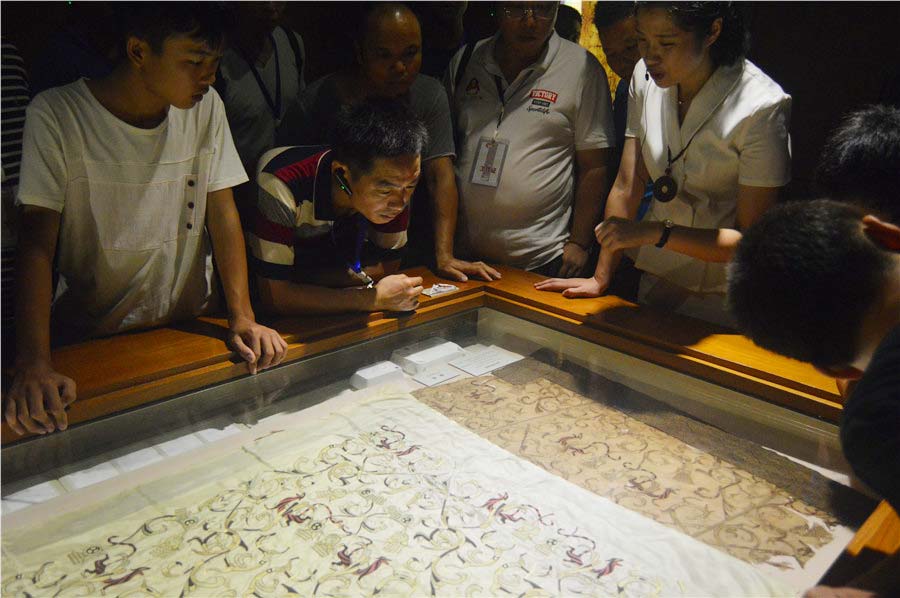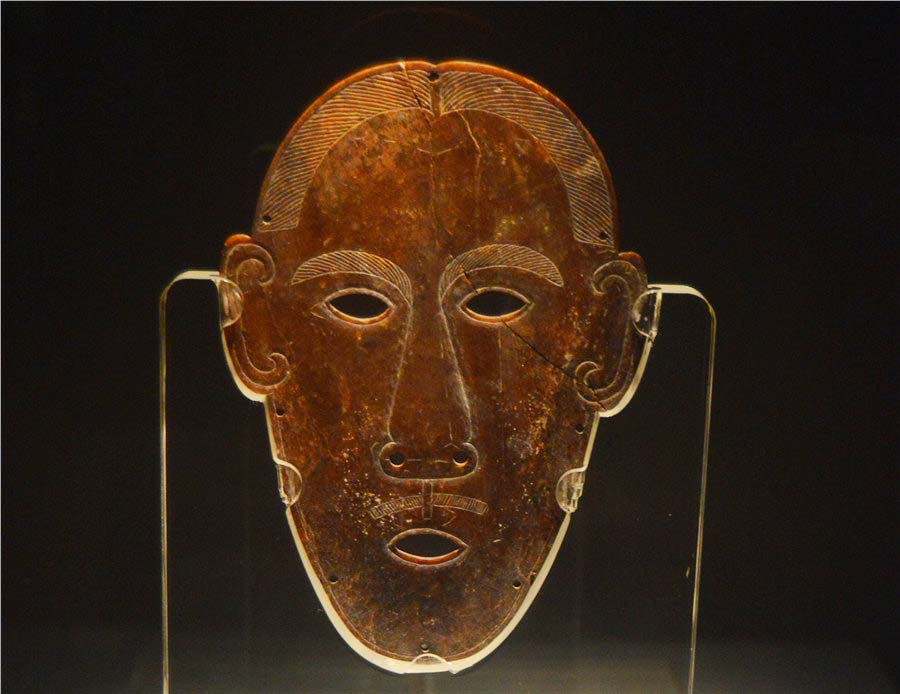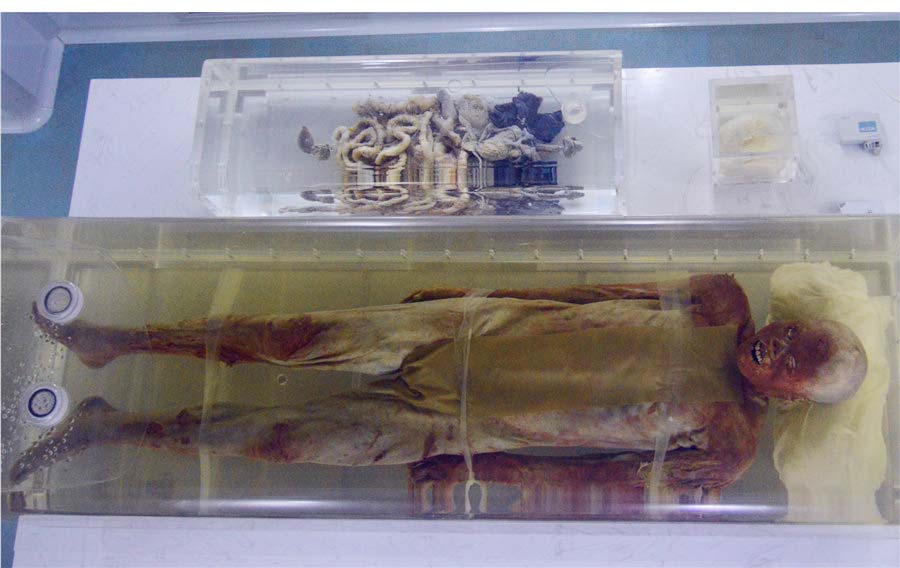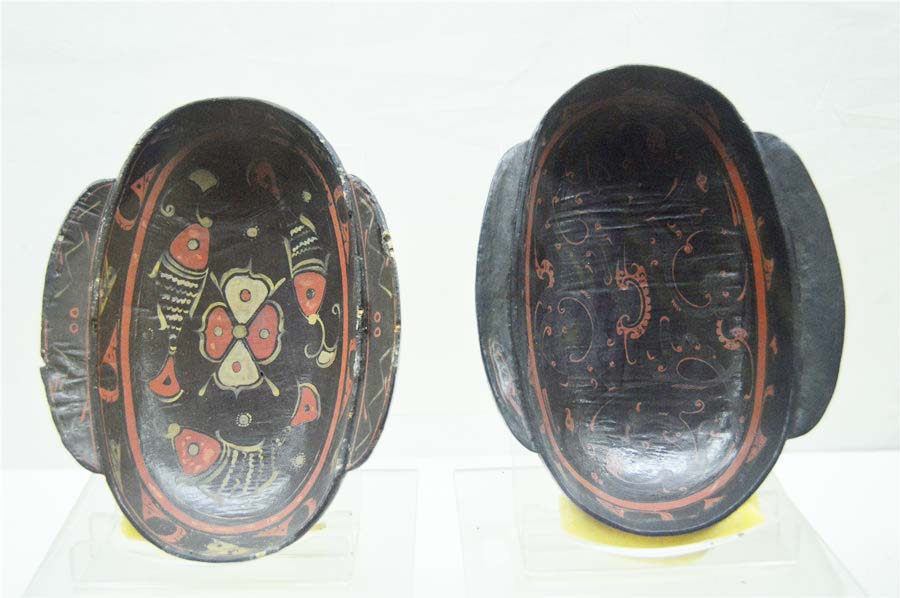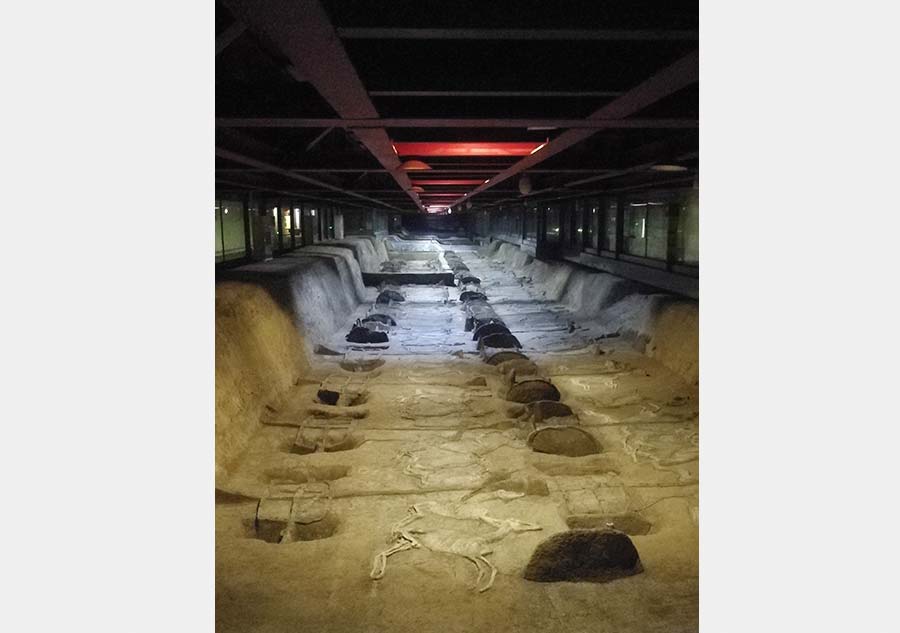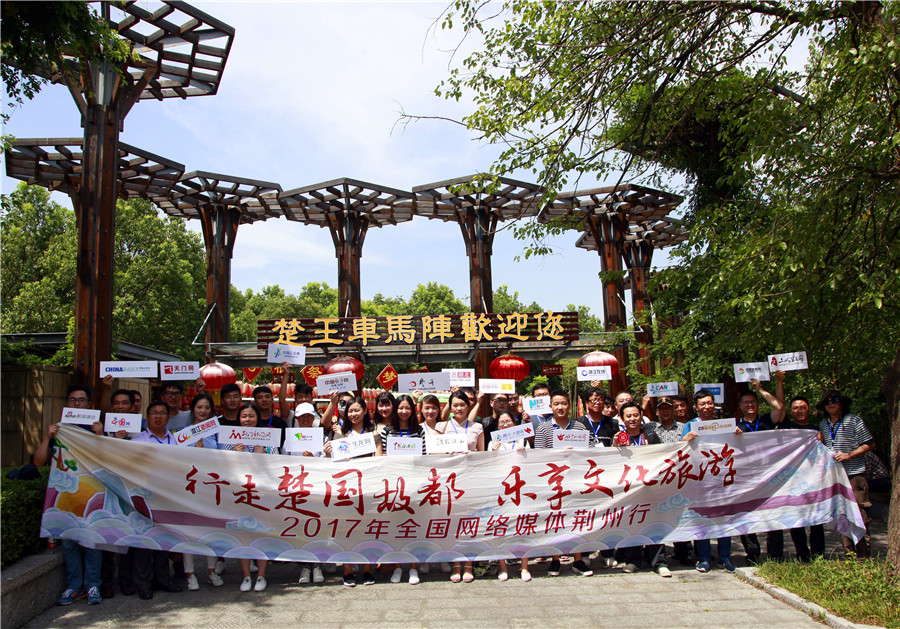DepthReading
Jingzhou Museum and King Chu's Mausoleum showcase Chu culture
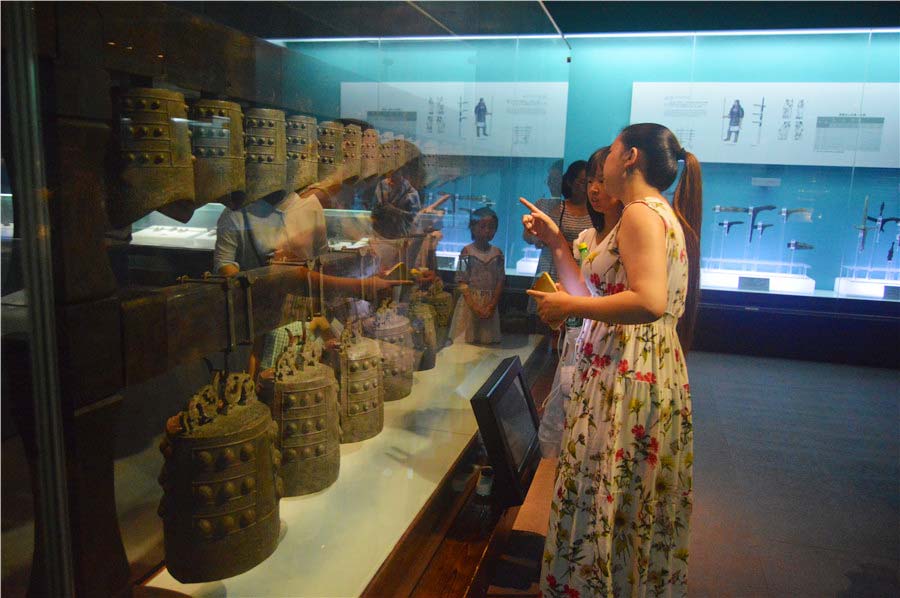 |
Online journalists view a set of bronze chime bells from the Warring States period at the Jingzhou Museum. [Photo by Liu Xuanyi/chinadaily.com.cn] |
A group of online journalists from big media event "Exploring the ancient Chu culture" traced the ancient Chu civilization in Jingzhou, Central China's Hubei province, on Aug 10.
Jingzhou was the cradle of ancient Chu culture; dating back to 689 BC, when Emperor Wen of Chu State chose Ying as the capital, which nowadays is in the Jingzhou area.
From then, it served as the capital for 20 kings of Chu State in 411 years and, therefore, became the center of the glorious Chu culture.
The Chu culture is one of the most important parts of Chinese culture. In the Spring and Autumn Period (770-475 BC), as well as the Warring States period (475-221 BC), Chu was the largest state in area within the territory of Hubei province.
Chu once tried to conquer the Central Plains, comprising the middle and lower reaches of the Yellow River, and became one of the five powers in the Spring and Autumn Period, as well as one of the seven powerful states in the Warring States Period.
Chu had once reached a very high level in the fields of bronze smelting, colorful weaving on silk, embroidery and lacquer ware manufacturing.
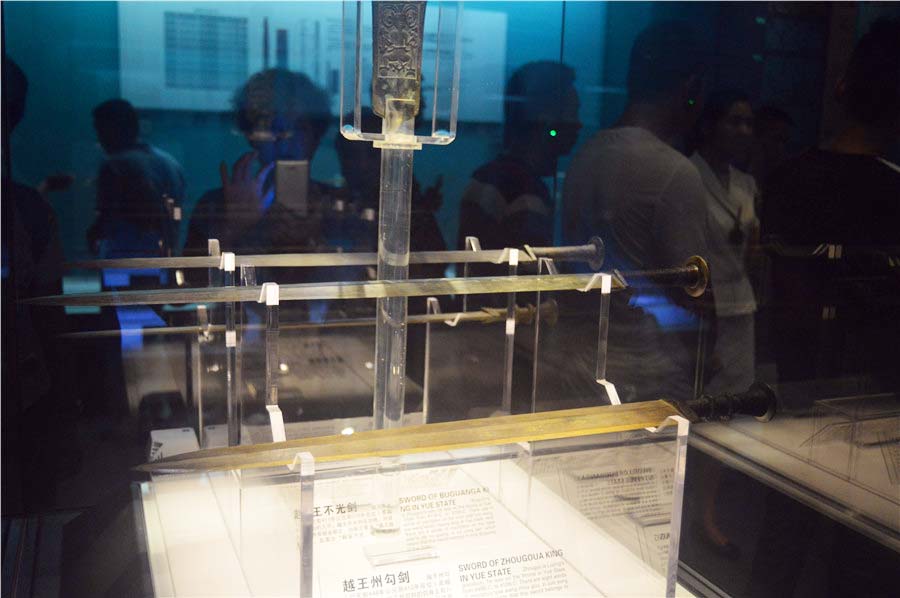 |
The sword of Zhougou, a King of the Yue State during the Warring States period, on display at the Jingzhou Museum. [Photo by Liu Xuanyi/chinadaily.com.cn] |
He also had made great achievements in the artistic field, which was mainly demonstrated in music, dancing, paintings and sculptures. Its civilization can be compared to the ancient Greek and Athenian culture in Europe.
Chime bells unearthed from the tomb of Yi, a high official of the ancient State Zeng at Suizhou, are gems among the ancient musical instruments in the world. They are praised as "one of the eighth miracle in the ancient world".
The Tonglushan Relic of the ancient mineral smelting at Daye is the largest and oldest mineral-smelting relic discovered in China. It has a history of 3,000 years and is called "the hometown of bronze".
The Jingzhou Museum is the best place to learn about the ancient Chu culture. Founded in 1958, there are more than 130,000 relics displayed at the museum, which include bronze, pottery, lacquer, silk fabrics, jade and bamboo slips.
Permanent exhibitions include The Exhibition of Relics in Prehistory, The Exhibition of Bronze in Jianghan Plain, The Exhibition of Bamboo Slips Excavated in Jingzhou, The Exhibition of Jade Excavated in Xiongjiazhong Tomb and The Treasure House.
King Chu's Mausoleum is another place to see the high level of ancient Chu culture. The marvelous big horse and chariot pit at the mausoleum is one of the greatest archeological discoveries in China.
Category: English
DepthReading
Key words:

